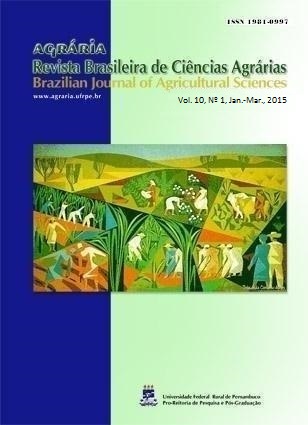Delivery methods of the antagonist Pseudomonas putida (UFV-0073) for the control of bacterial spot and bacterial speck of tomato
DOI:
https://doi.org/10.5039/agraria.v10i1a5229Keywords:
biological control, Pseudomonas syringae pv. tomato, phylloplane residente, Solanum lycopersicum, Xanthomonas gardneriAbstract
Promoting Growth Plant Rhizobacteria (PGPR’s) are usually delivery by seeds microbiolization and phylloplane resident bacteria are delivery by spraying the aerial part of the culture. In the present study, we tested whether other methods of delivery biocontrol agent Pseudomonas putida (UFV-0073), phylloplan eautochthonous of tomato and selected for the biological control of foliar diseases are efficient against Xanthomonas gardneri (Xg) and Pseudomonas syringae pv. tomato (Pst). The experiments were conducted under greenhouse conditions, and four methods of deliverywere tested: 1- seeds microbiolization, 2- spraying bacterial suspension, 3-combination of treatments 1 and 2 and 4- spraying the supernatant of the bacterial suspension. Plant pathogenic bacteria Pst and Xg were inoculated by spraying tomato leaves. For both pathosystems studied, the best delivery methods were spraying phylloplane associated seeds microbiolization and spraying the phylloplane with the supernatant of the suspension of the biocontrol agent.
Downloads
Downloads
Published
How to Cite
Issue
Section
License

This work is licensed under a Creative Commons Attribution-NonCommercial 3.0 Unported License.


